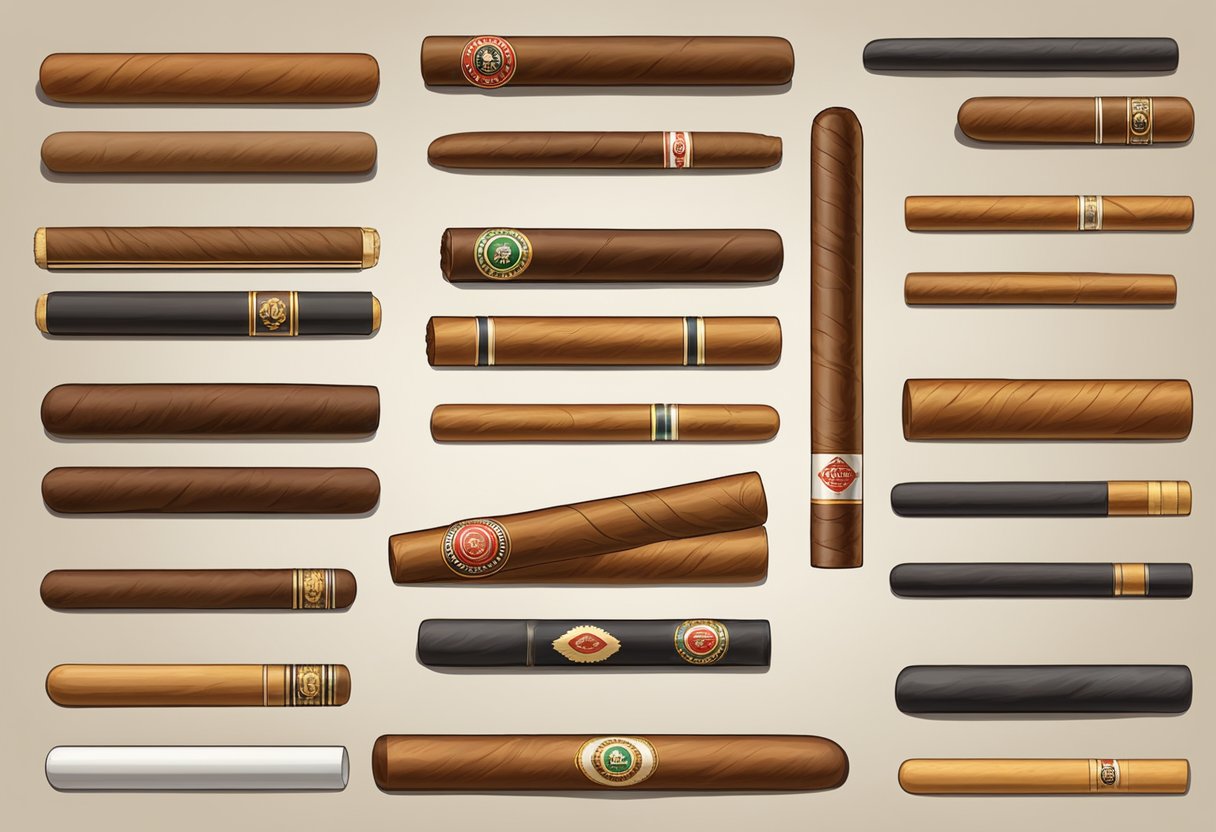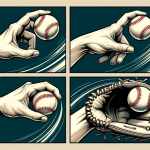Types Of Cigars
Cigars have been enjoyed for centuries and are often associated with luxury and celebration. However, with so many types of cigars available, it can be overwhelming for beginners to understand the differences between them. In this article, we will provide an introduction to types of cigars, including their shapes, sizes, and composition, to help readers understand the basics of selecting and enjoying cigars.
Understanding cigar types is essential to selecting a cigar that best suits your preferences. Cigars can vary in size, shape, and composition, all of which can affect the smoking experience. For example, thinner cigars tend to burn hotter than fatter ones, while the strength of a cigar is determined by the tobacco it is rolled with, not its size. Additionally, the wrapper, filler, and binder of a cigar can all influence its flavor and aroma.
When selecting a cigar, it’s important to consider the regional tobacco varieties used in its composition. Different regions produce tobacco with unique characteristics that can affect the flavor of the cigar. For example, Cuban cigars are known for their rich, earthy flavors, while Nicaraguan cigars are often described as having a spicy, full-bodied taste. By understanding the basics of cigar types and composition, readers can make informed decisions when selecting and enjoying cigars.
Key Takeaways
- Understanding the basics of cigar types, including their shapes, sizes, and composition, is essential for selecting a cigar that best suits your preferences.
- The wrapper, filler, and binder of a cigar can all influence its flavor and aroma.
- Regional tobacco varieties used in a cigar’s composition can affect the flavor of the cigar.
Understanding Cigar Types

Cigars come in a variety of shapes, sizes, and colors. Understanding the different types of cigars can help you choose the right one for your taste and occasion. In this section, we will discuss the two basic categories of cigars, Parejos and Figurados, as well as the different types of wrapper leaves.
Parejos vs Figurados
Parejos are the most common type of cigar, also known as straight shapes. These cigars have even sides and an open foot, which is the end you light. The head, which is the end you put in your mouth, needs to be cut. Parejos can be round or box-pressed. They are usually easier to smoke for beginners as they have a consistent shape and size.
Figurados, on the other hand, are cigars that are not straight-sided cylinders. These cigars have a tapered shape, which can vary depending on the manufacturer. Figurados include any cigar that is not a Parejo. The basic categories of Figurados are Pyramid, Torpedo, Belicoso, and Perfecto. Pyramid cigars have a pointed head and a cut foot, while Torpedo cigars have a pointed head and a closed foot. Belicoso cigars have a rounded head and a tapered foot, and Perfecto cigars have both ends tapered.
Wrapper Varieties
Wrapper leaves are an essential part of a cigar, as they provide most of the flavor and aroma. The color and texture of the wrapper leaf can also affect the smoking experience. There are different types of wrapper leaves, including Natural, Maduro, Oscuro, Claro, Candela, Double Claro, Corojo, Cameroon, Connecticut, and Habano.
Natural wrapper leaves are light-colored and range from very light tan to naturally golden. Maduro wrapper leaves, on the other hand, are dark-colored and get their color primarily from the fermentation process. They can range from dark brown to jet black. Oscuro wrapper leaves are the darkest and strongest wrapper leaves, while Claro wrapper leaves are the lightest and mildest.
Candela wrapper leaves are green and have a grassy flavor, while Double Claro wrapper leaves are also green but milder in flavor. Corojo wrapper leaves are reddish-brown and have a spicy flavor, while Cameroon wrapper leaves are light brown and have a sweet and nutty flavor. Connecticut wrapper leaves are light brown and have a mild flavor, while Habano wrapper leaves are reddish-brown and have a rich and complex flavor.
In conclusion, understanding the different types of cigars and wrapper leaves can help you choose the right cigar for your taste and occasion. Parejos and Figurados are the two basic categories of cigars, while Natural, Maduro, Oscuro, Claro, Candela, Double Claro, Corojo, Cameroon, Connecticut, and Habano are the different types of wrapper leaves.
Cigar Shapes and Sizes
Cigars come in a variety of shapes and sizes, each with its own unique characteristics. The shape and size of a cigar can affect its burn rate, flavor, and overall smoking experience. In this section, we will explore the classic shapes and unique sizes of cigars.
Classic Shapes
The classic shapes of cigars include the Corona, Robusto, Churchill, Toro, Pyramid, Perfecto, Torpedo, Lancero, and Culebra. The Corona is a straight cigar with a rounded head and an open foot. It is one of the most popular cigar shapes and is available in a range of sizes. The Robusto is a short, thick cigar with a straight body and a rounded head. It is a popular choice for those who prefer a stronger, bolder flavor. The Churchill is a long, thin cigar with a tapered head and a straight body. It is named after Winston Churchill, who was often seen smoking this type of cigar. The Toro is a medium-sized cigar with a straight body and a rounded head. It is a versatile cigar that can be enjoyed by both novice and experienced smokers. The Pyramid is a cigar with a tapered head and a straight body. It is a popular choice for those who enjoy a more complex smoking experience. The Perfecto is a cigar with a pointed head and a tapered body. It is a difficult shape to roll and is considered a mark of a skilled cigar maker. The Torpedo is a cigar with a pointed head and a straight body. It is similar to the Perfecto but has a more pointed head. The Lancero is a long, thin cigar with a straight body and a rounded head. It is a popular choice for those who prefer a milder smoking experience. The Culebra is a cigar made up of three twisted cigars that are braided together. It is a unique shape that is not commonly found.
Unique Sizes
Cigars come in a range of sizes, from the small Petit Corona to the large Presidente. Other popular sizes include the Corona Gorda, Gordo, Panatela, Belicoso, Double Corona, and Lonsdale. The Petit Corona is a small cigar that is perfect for a quick smoke. The Corona Gorda is a larger version of the Corona, with a thicker ring gauge. The Gordo is a thick, heavy cigar that is popular among experienced smokers. The Panatela is a long, thin cigar that is perfect for those who prefer a milder smoking experience. The Belicoso is a cigar with a tapered head and a straight body. It is similar to the Torpedo but has a shorter head. The Double Corona is a long, thick cigar that is perfect for a long, relaxing smoke. The Lonsdale is a cigar with a long, thin body and a rounded head. It is a popular choice for those who prefer a milder smoking experience.
In summary, the shape and size of a cigar can greatly affect its smoking experience. Whether you prefer a classic shape or a unique size, there is a cigar out there for everyone.
Cigar Composition
Cigars are made up of three main components: the wrapper, binder, and filler. Each of these components plays an important role in the overall taste and strength of the cigar. In addition, aging can also significantly affect the flavor and aroma of a cigar.
Wrapper, Binder, and Filler
The wrapper is the outermost layer of the cigar and is responsible for much of its flavor and aroma. Wrappers are typically made from high-quality tobacco leaves and come in a variety of shades, from light to dark. The color of the wrapper can give a good indication of the strength of the cigar, with darker shades indicating a stronger smoke.
The binder is the layer of tobacco that holds the filler together. It is located just beneath the wrapper and is responsible for the cigar’s burn rate and overall construction. Binders can also contribute to the flavor of the cigar, although their impact is generally less significant than that of the wrapper.
The filler is the heart of the cigar and is responsible for its flavor and strength. It is made up of a blend of different types of tobacco leaves, including both long and short filler. Long filler is made up of whole tobacco leaves, while short filler is made up of smaller pieces of tobacco. The blend of filler tobacco can vary greatly from one cigar to the next, and can have a significant impact on the overall taste and strength of the cigar.
The Role of Aging
Aging is an important part of the cigar-making process and can significantly affect the flavor and aroma of a cigar. During the aging process, the oils in the tobacco leaves break down and mellow out, resulting in a smoother and more complex smoke. The length of time a cigar is aged can vary depending on the manufacturer and the desired flavor profile.
In general, higher-quality cigars are aged for longer periods of time, resulting in a more refined and nuanced smoking experience. However, aging can also be a subjective process, and some smokers prefer the bold and robust flavors of a younger cigar.
Overall, understanding the composition of a cigar can help smokers make more informed choices about their smoking preferences. Whether you prefer a mild and mellow smoke or a bold and complex flavor profile, there is a cigar out there for every taste.
Regional Tobacco Varieties
When it comes to cigars, the type of tobacco used plays a crucial role in the flavor and aroma of the cigar. Different regions around the world have their own unique varieties of tobacco, each with its own distinct characteristics.
Cuban Influence
Cuba is often considered the birthplace of cigars, and for good reason. Cuban tobacco is known for its rich, full-bodied flavor and is highly sought after by cigar aficionados around the world. Cuban cigars are made using a variety of tobacco leaves, including the flavorful ligero and the milder seco.
However, due to trade restrictions, Cuban cigars are not readily available in the United States. This has led to other countries, such as Nicaragua and Honduras, to step up and try to fill the void left by Cuban cigars.
Other Tobacco Regions
Nicaragua has become a major player in the cigar market, producing some of the finest cigars in the world. Nicaraguan tobacco is known for its complexity and depth of flavor, with a hint of sweetness and notes of cedar. Honduras is also a significant producer of cigars, with a focus on milder blends that appeal to a wider audience.
In the United States, tobacco is grown primarily in states such as Kentucky and Virginia. The tobacco grown in these regions is often used for cigarette production, but can also be found in some premium cigars. Ecuador is another notable producer of tobacco, with a focus on wrapper leaves that are used to give cigars their distinctive appearance.
Overall, the type of tobacco used in a cigar is a significant factor in its quality and flavor. Each region has its own unique varieties of tobacco, and it’s worth exploring the different flavors and aromas that each one has to offer.
Selecting and Enjoying Cigars
Choosing the Right Cigar
Choosing the right cigar is an important part of the smoking experience. Cigars come in various sizes, shapes, and strengths, and selecting the right one can make all the difference. Cigar aficionados and connoisseurs will often have a special interest in finding the perfect cigar for their smoking experience.
When selecting a cigar, it is important to consider the strength and flavor profile. Cigars can range from mild to full-bodied, and can have flavors such as earthy, spicy, sweet, or nutty. It is recommended that beginners start with a mild to medium-bodied cigar to get a feel for the smoking experience.
The wrapper also plays a significant role in the flavor profile of the cigar. A darker wrapper generally indicates a stronger flavor, while a lighter wrapper is milder. It is important to inspect the wrapper for any imperfections, as this can affect the draw and burn of the cigar.
Pairing with Beverages
Pairing a cigar with the right beverage can enhance the overall smoking experience. Rum is a popular choice for pairing with cigars, as it can complement the flavors of the cigar. Other beverages such as whiskey, cognac, and coffee can also be paired with cigars.
When pairing with a beverage, it is important to consider the strength and flavor profile of both the cigar and the beverage. A full-bodied cigar may overpower a light beverage, while a mild cigar may be overpowered by a strong beverage.
In conclusion, selecting and enjoying cigars can be a special interest for those who appreciate the smoking experience. By considering the strength, flavor profile, and wrapper of the cigar, as well as pairing it with the right beverage, one can elevate the overall smoking experience.






